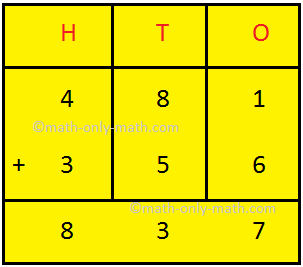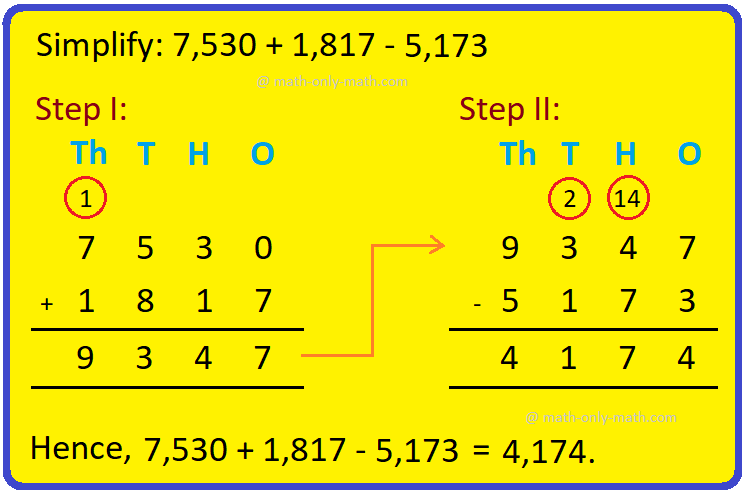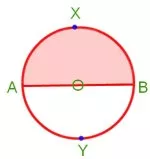Subscribe to our YouTube channel for the latest videos, updates, and tips.
Home | About Us | Contact Us | Privacy | Math Blog
Theorem of Joint Variation
Here we will discuss about the Theorem of Joint Variation with the detailed explanation.
The theorem of joint variation can be established by stating the relationship between three variables which are separately in direct variation with each other.
Theorem of Joint Variation: If x ∝ y when z is constant and x ∝ z when y is constant, then x ∝ yz when both y and z vary.
Proof:
Since x ∝ y when z is constant.
Therefore x = ky where k = constant of variation and is independent to the changes of x and y that means the value of K doesn’t change for any value of X and Y.
Again, x ∝ z when y is constant.
or, ky ∝ z when y is constant (By putting ky in place of x we get).
or, k ∝ z (y is constant).
or, k = mz where m is a constant which is independent to the changes of k and z that means the value of m doesn’t change for any value of k and z.
Now, the value of k is independent to the changes of x and y. Hence, the value of m is independent to the changes of x, y and z.
Therefore x = ky = myz (since, k = mz)
where m is a constant whose value does not depend on x, y and z.
Therefore x ∝ yz when both y and z vary.
Note: (i) The above theorem can be extended for a longer number of variables. For example, if A ∝ B when C and D are constants, A ∝ C when B and D are constants and A ∝ D when B and C are constants, thee A ∝ BCD when B, C and D all vary.
(ii) If x ∝ y when z is constant and x ∝ 1/Z when y is constant, then x ∝ y when both y and z vary.
So in this theorem we use the principle of direct variation to prove that how joint variation works for to establish a correlation among more than two variables.
For solving a problems related to the theory of joint variation first we need to solve by following steps.
1. Build the correct equation by adding a constant and relate the variables.
2. We need to determine the value of the constant from the given data.
3. Substitute the value of the constant in the equation.
4. Put the values of variables for required situation and determine the answer.
Now we will see some problems and solutions related to the theorem of joint variation:
1. The variable x is in joint variation with y and z. When the values of y and z are 2 and 3, x is 16. What is the value of x when y = 8 and z =12?
The equation for the given problem of joint variation is
x = Kyz where K is the constant.
For the given data
16 = K × 2 × 3
or, K = 83
So substituting the value of K the equation becomes
x = 8yz3
Now for the required condition
x = 8×8×123 = 256
Hence the value of x will be 256.
2. A is in joint variation with B and square of C. When A = 144, B = 4 and C = 3. Then what is the value of A when B = 6 and C = 4?
From the given problem equation for the joint variation is
A = KBC2
From the given data value of the constant K is
K = BC2A
K = 4×32144 = 36144 = 14.
Substituting the value of K in the equation
A = BC24
A = 6×424 = 24
Some Useful Results:
Theorem of Joint Variation
(i) If A ∝ B, then B ∝ A.
(ii) If A ∝ B and B∝ C, then A ∝ C.
(iii) If A ∝ B, then Aᵇ ∝ Bᵐ where m is a constant.
(iv) If A ∝ BC, then B ∝ A/C and C ∝ A/B.
(v) If A ∝ C and B ∝ C, then A + B ∝ C and AB ∝ C²
(vi) If A ∝ B and C ∝ D, then AC ∝ BD and A/C ∝ B/D
Now we are going to proof the useful results with step-by-step detailed explanation
Proof: (i) If A ∝ B, then B ∝ A.
Since, A ∝ B Therefore A = kB, where k = constant.
or, B = 1/K ∙ A Therefore B ∝ A. (since,1/K = constant)
Proof: (ii) If A ∝ B and B ∝ C, then A ∝ C.
Since, A ∝ B Therefore A = mB where, m = constant
Again, B ∝ C Therefore B = nC where n= constant.
Therefore A= mB = mnC = kC where k = mn = constant, as m and n are both Constants.
Therefore A ∝ C.
Proof: (iii) If A ∝ B, then Aᵇ ∝ Bᵐ where m is a constant.
Since A ∝ B Therefore A = kB where k= constant.
Aᵐ = KᵐBᵐ = n ∙ Bᵐ where n = kᵐ = constant, as k and m are both constants.
Therefore Aᵐ ∝ Bᵐ.
Results (iv), (v) and (vi) can be deduced by similar procedure.
Summarisation:
(i) If A varies directly as B, then A ∝ B or, A = kB where k is the constant of variation. Conversely, if A = kB i.e., A/B = k where k is a constant, then A varies directly as B.
(ii) If A varies inversely as B, then A ∝ 1/B or, A= m ∙ 1/B or, AB= m where m = constant of variation. Conversely, if AB = k (a constant), then A varies inversely as B.
(iii) If A varies jointly as B and C, then A ∝ BC or A = kBC where k = constant of variation.
● Variation
- What is Variation?
- Direct Variation
- Inverse Variation
- Joint Variation
- Theorem of Joint Variation
- Worked out Examples on Variation
- Problems on Variation
11 and 12 Grade Math
From Theorem of Joint Variation to HOME PAGE
Didn't find what you were looking for? Or want to know more information about Math Only Math. Use this Google Search to find what you need.
Recent Articles
-
5th Grade Circle Worksheet | Free Worksheet with Answer |Practice Math
Jul 11, 25 02:14 PM
In 5th Grade Circle Worksheet you will get different types of questions on parts of a circle, relation between radius and diameter, interior of a circle, exterior of a circle and construction of circl… -
Construction of a Circle | Working Rules | Step-by-step Explanation |
Jul 09, 25 01:29 AM
Construction of a Circle when the length of its Radius is given. Working Rules | Step I: Open the compass such that its pointer be put on initial point (i.e. O) of ruler / scale and the pencil-end be… -
Combination of Addition and Subtraction | Mixed Addition & Subtraction
Jul 08, 25 02:32 PM
We will discuss here about the combination of addition and subtraction. The rules which can be used to solve the sums involving addition (+) and subtraction (-) together are: I: First add -
Addition & Subtraction Together |Combination of addition & subtraction
Jul 08, 25 02:23 PM
We will solve the different types of problems involving addition and subtraction together. To show the problem involving both addition and subtraction, we first group all the numbers with ‘+’ and… -
5th Grade Circle | Radius, Interior and Exterior of a Circle|Worksheet
Jul 08, 25 09:55 AM
A circle is the set of all those point in a plane whose distance from a fixed point remains constant. The fixed point is called the centre of the circle and the constant distance is known






New! Comments
Have your say about what you just read! Leave me a comment in the box below. Ask a Question or Answer a Question.